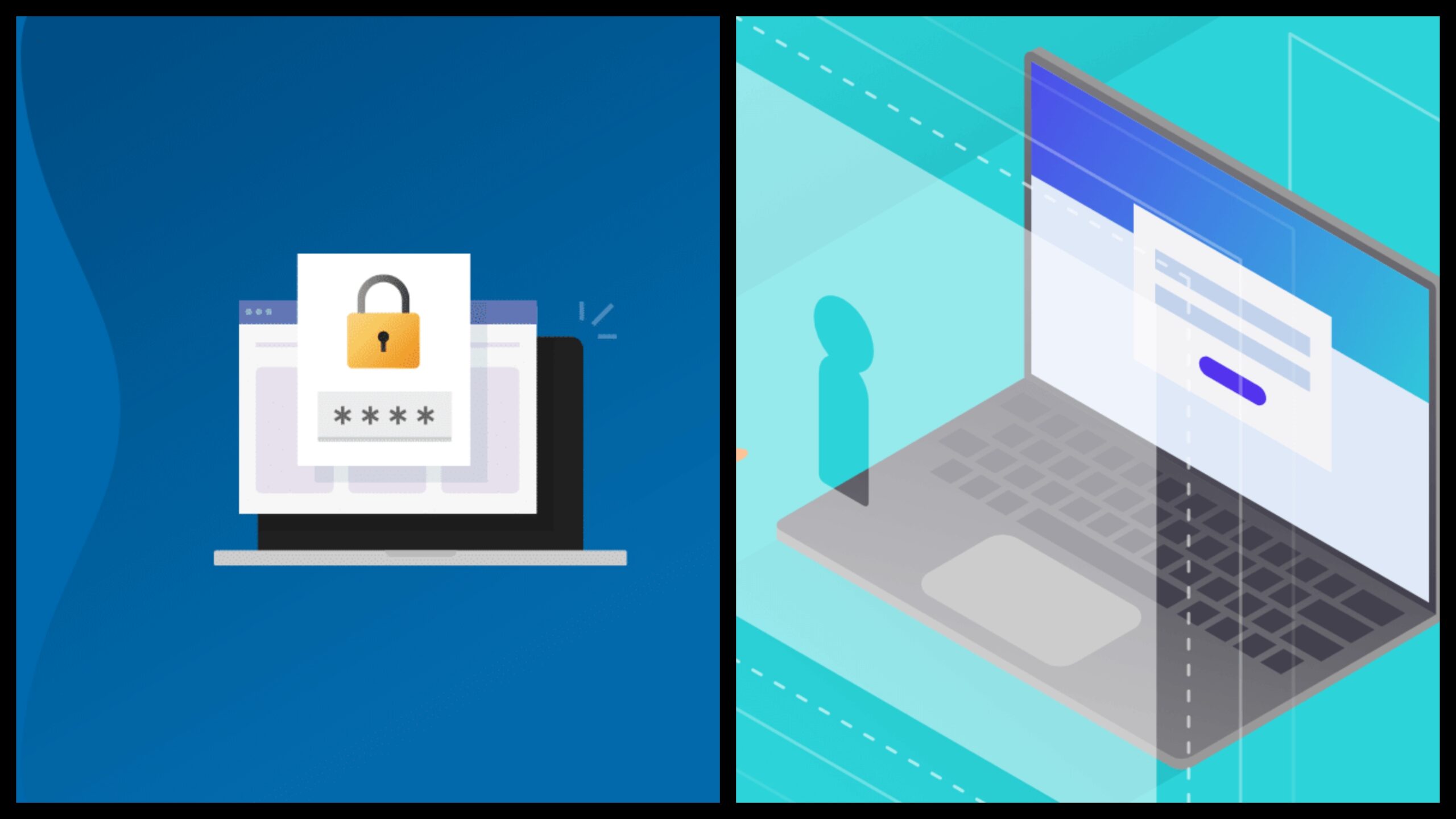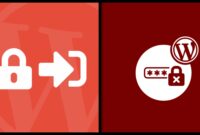
How Can You Protect Your WordPress Website?
WordPress is a great, safe platform right out of the box, but you can and should do more with it. do to safeguard your website against malicious intent. Many of these improvements to security are simple to implement and can be carried out manually in a matter of minutes. Some only require a specific plugin to be installed.
I’ll walk you through 25 different ways to strengthen your WordPress fortress in this article. But first, let’s get a little deeper into the reasons why you should care about website security.

The significance of WordPress security.
Choosing WordPress as your platform is a great place to start if you want to create a secure website. Not only is it a powerful and adaptable platform for building websites, but it is also extremely safe right out of the box.
This is because WordPress developers are committed to “hardening” the core platform as much as possible and care about security. In addition, they frequently release security-focused updates and patches that your site will automatically download and install. This indicates that your website will be well-equipped to deal with emerging threats.
Naturally, no platform is 100% secure. Even the most well-guarded websites are vulnerable to hacking attempts (if only they would use their powers for good, am I right?). Additionally, WordPress’s popularity makes it a constant target because it powers more than 30% of the web.
It should go without saying that bad guys can do a lot of damage if they get into your website.
They can, for instance, steal or otherwise compromise sensitive information.
information, install malware, modify your website to meet their requirements, or even shut it down completely. This is bad for both you and the people who use your app, and if you run a business, it could mean losing customers and money.
Adding additional security measures to your WordPress website is critical. You should devote at least as much time and effort to this task as you did to designing your website in the first place. The good news for you, dear reader, is that you can increase the security of your website in a variety of ways, some of which are less time-consuming and more straightforward than others.
Tips for WordPress security.
I hope I have convinced you of the significance of keeping your WordPress website secure. If this is not the case, I will need to re-enroll in Persuasive Writing 101. Don’t force me to do that, please.
I’ll go over 25 useful ways to make your website safer and less likely to be hacked throughout the rest of this article. In addition, I will direct you in the right direction to begin using each method.
Although you are free to put any of the suggestions on this list into action, the more precautions you take to protect your website, the less likely it is that something bad will happen in the future.
Choose a reliable host.
Your web host is like your website’s street on the Internet; it’s where your website “lives.”
Like, according to some, a good school district is important to your child’s future I came out okay), but the home base of your website matters a lot in many big ways.
How well your website performs, how dependable it is, how big it can grow, and even how high it ranks in search engines all depend on the hosting provider. The best hosts provide a platform-specific service, numerous useful features, and excellent support.
Your web host can also have a significant impact on the security of your website, as you probably already guessed. Selecting a reputable hosting service has numerous advantages in terms of security.
How WordPress Security Can Be Improved by Hosting
-In order to deal with the most recent threats and eliminate potential security breaches, a high-quality host will constantly update its software, tools, and services.
-Various targeted security features, such as DDoS protection and SSL/TLS certificates, are frequently provided by web hosts. Additionally, you should have access to a Web Application Firewall (WAF), which will assist in monitoring and preventing significant threats to your website.
-In the event that you are hacked, you will be able to quickly and easily revert to a previous, stable version because your web host will most likely provide a means to back up your website—and in some cases, even do it for you.
In the event that you do encounter a security-related issue, you will always have access to dependable, round-the-clock support from your host.
Domain Registration Privately.
You will need to provide your name, address, and phone number in order to register a domain. Using a quick search in the WHOIS directory, you can access this data, which is used to track domain name ownership.
Even though keeping track of this information is essential to the health of the internet, it is reasonable not to want it online. Private Registration appears in the narrative at this point. When you register a domain with DreamHost (or, I suppose, another secure hosting platform), you can replace your personal information with the relevant information from the hosting platform. As a result, DreamHost’s address and contact information can be found by looking up your domain on WHOIS. Even after your domain has already been registered, you can activate this security feature!
Make your website HTTPS.
Let’s go over an SSL/TLS certificate in greater detail. You will be able to change your website to HyperText Transfer Protocol Secure (HTTPS), which is a version of HTTP that is more secure. Even if you’ve never heard of these security concepts before, they are important and easy to understand.
The protocol that moves data between your website and any browser attempting to access it is known as HTTP. Through this protocol, all of your content, media, and website code are sent to the visitor’s location when they click on your home page.
Even though this is necessary, it does raise some potential security concerns. While the data is in transit, criminals may attempt to intercept it and use it for their own evil purposes.
This issue is resolved by HTTPS! It does the same thing as HTTP but encrypts the data on your website as it moves from one location to another, making it difficult to access.
At first, websites that handled confidential customer data like credit card information were the primary beneficiaries of HTTPS. But it’s becoming more and more common on all websites, and big names like WordPress and Google have been trying to get it used everywhere.
How to Implement HTTPS.
An SSL/TLS certificate is the first thing you’ll need to convert your website to HTTPS. Browsers are informed that your website is legitimate and that its data are properly encrypted by this.
Modify the Administrator Username.
You are provided with a User Profile when you first create your website. You can change your Nickname or fill in your full name at any time, but changing your username is a completely different story. You will need to create a new user and grant that user the administrator role in order to change your username. The problem? You must use a different email address than the one that is currently associated with your account.
Make a password that is safe.
People, be very careful when choosing your login credentials. Like extremely significant!
Why? A shady weirdo will have a harder time getting into your website because of this. It’s important to choose strong usernames and passwords for your WordPress website, as you probably already have a lot of experience doing so for other online accounts.
You will be given the opportunity to create a login username and password when you create your website. The username will be admin by default, but you can (and probably should) change it. However, you can choose to use the default setting if you want to because there are a variety of methods by which people can identify your WordPress username.
But because your password is so important, you should pick a strong one. A recommendation of a simple four-word phrase has replaced the traditional mixture of random letters, numbers, and symbols as the best method for selecting a strong password. It’s a strategy that’s been around for a while in some places.
Set up a firewall for web applications.
Most likely, you are familiar with the concept of a firewall, a program that assists in preventing various unwanted attacks. Your computer probably has a firewall of some kind. A Web Application Firewall (WAF) is nothing more than a firewall made for websites. Servers, specific websites, or entire groups of websites can all be protected by it.
Two-factor authentication should be used.
One more strategy needs to be addressed before we move on: two-factor authentication, also known as two-step authentication and a number of other names that are similar to it The two-step procedure for logging into your website is referred to by this term. While this takes some extra effort on your part, it significantly hinders the entry of hackers.
Utilizing a smartphone or other device to verify your login is part of two-factor authentication. You will first visit your WordPress website and, as usual, enter your username and password. After that, a one-of-a-kind code will be sent to your mobile device, which you’ll need to give to finish logging in. By demonstrating that you have exclusive access to something, such as a specific phone or tablet, you can use this to establish your identity.
When adding new plugins and themes, be mindful.
One of the advantages of using WordPress is that themes and plugins are readily available. Almost any feature or functionality you can imagine can be added to your website using these handy tools.
However, not all themes and plugins are created equal.
Plugins that are unreliable, insecure, or just plain sucky can be created by developers who are careless or lack the necessary experience. They might make use of poor coding practices that leave holes that hackers can easily take advantage of or unintentionally alter functionality that is essential.
Frequently update.
After you have installed the themes and plugins you want for your website, your work is not done.
In addition, you’ll need to keep them up to date to guarantee that they work well together and are protected from the most recent threats. You just need to go to your WordPress dashboard, look for the red notifications telling you there are themes or plugins with available updates, and click “update now” next to each one. Fortunately, this is a simple process.
Configure permissions for files.
Let’s get technical for a while.
A number of folders and files house the majority of your WordPress site’s data, content, and information. Each one is assigned a permissions level and is arranged in a hierarchical structure. A WordPress file or folder’s permissions can be set to allow access to anyone, only you, or almost anything in between. These permissions determine who can view and edit the file or folder.
Keep users of WordPress to a minimum.
You don’t need to worry about this step if you manage your WordPress website on your own. You alone will be able to make changes to your website if you don’t give anyone else an account.
However, many people enjoy interacting with others and eventually add multiple users to their websites. It’s possible that you want to allow other authors to contribute content, or it’s possible that you need people to edit that content and run your website. Even more likely than not, you will have a team of users who will frequently access your WordPress website and make their own modifications.
This can be beneficial in a number of ways and may even be necessary at times. However, it also poses a potential threat to security.
Shut down idle users.
It has happened to all of us: we are browsing online when we are actually distracted by something.
Limit the number of times you try to log in.
Password forgetting is a common occurrence. Sometimes it takes two or three tries before we get an angry message like “error: The password cannot have been used before.
Keep an eye on what’s happening in your admin area.
Monitoring what each user is doing on the website can be a good idea if you have multiple users. You can determine whether unauthorized users have gained access to your WordPress admin area by monitoring activity there. This will help you identify instances in which other users are engaging in activities that they shouldn’t be doing.
You will want to be able to identify the person responsible for any strange changes or suspicious installations. Plugins covered everything.
Employ CAPTCHA.
Junkmail! Spam! Whatever you call it, it eventually appears in our comments or email inboxes. Most of the time, spam is just advertisements trying to get your attention. The danger comes from junk mail that contains phishing links or malware. Therefore, what is the most effective strategy for removing the cheesy advertisements from your comment section and ensuring the legitimacy of any form results you collect? To distinguish between computers and humans, a completely automated public Turing test would be extremely beneficial.
Make regular backups of your website.
If I claimed there was a one-size-fits-all solution for safeguarding your website from all threats, I would be lying. Even if you implement each suggestion on this list, there is still a possibility that your website will be hacked.
Hackers are skilled in their field. You must simply defeat them at their own game.
Even if you want to make sure it never happens, having a comprehensive security plan means preparing for what you will do in the event of the worst.
Protect your login page with a password.
Hackers will most likely attempt to access your website through the login page. Password protection is still the best option if you host content that perhaps not everyone needs to see.
Cover up your login page.
It’s great to add password protection to your login page, but what if hackers couldn’t even find it? Changing your wp-admin and wp-login pages is too simple not to do, as we have already stated that defaults can be our greatest weakness.
Install PHP.
Typically, each PHP version is supported for at least two years after it is released, so the developers of the code address any vulnerabilities. It is time to upgrade when that code is out of date (or reaches its EOL, or “end of life”). Otherwise, you run the risk of being affected by security issues, slow performance, and numerous bugs!
Protect Your Database.
WordPress uses wp_ as the prefix for all of your related tables by default, which is a boon for hackers. Leaving anything at the default settings is also a boon for hackers. Good news! A prefix of random letters and numbers is already present if you are utilizing the One-Click Installer. The system is content as long as it ends with an underscore. The Good News! If the website is fully hosted and meets a few other requirements, your WordPress installation may be eligible for the One-Click Installer.
Including Security Questions
Security questions give your security that extra boost, despite not being the most common solution. You may be able to create your own security questions or must choose from pre-existing ones, depending on the plugin you select. This feature is frequently offered in conjunction with another feature, such as two-factor authentication. There are a plethora of options for safeguarding your login page from malicious users.
Hide the version of WordPress.
We discussed updating your website, but what if that is not an option? We are aware of the reluctance of individuals to update Microsoft Windows; however, security through obscenity means that if they cannot locate it, they cannot hack it! You can either conceal the version of WordPress you are using or completely conceal that you are using WordPress. By altering the header code, you can conceal your WordPress information. You can edit the display information in your theme’s settings, but those lines of code won’t be back until the next theme update.
Stop using hotlinks.
Hotlinking is the practice of using files hosted on one website to link to another, thereby stealing bandwidth. Let’s say, for instance, that someone makes a clever comic and that another website wants to use that content without permission. Instead of hosting those comics on their own servers, they would simply link to them through hotlinking. The original website has to pay more for more bandwidth because of this.
DDoS Protection (XML RPC disabling)
A distributed denial of service (DDoS) attack occurs when a hacker sends a lot of data to multiple systems and overwhelms their target. Imagine a huge traffic jam for your website where no legitimate traffic could get in, which could slow down and crash their target.
Since the average internet user only waits three seconds for a page to load before clicking away, we are aware that patience is hard to come by. As a result, the sooner you can identify and address an attack on your website, the better.
Scanning for Malware.
Sadly, software exists that is more covert than your typical pop-up virus. The term “malware,” which is abbreviated as “malicious software,” infects a computer or website without the user’s knowledge by slipping into what appear to be legitimate applications.
Security for WordPress: Keeping It Away.
You will have to try to repair the damage for hours, if not days, if your website is hacked. Your personal information, or even worse, the data of your customers, could be compromised or lost forever.
As a result, you must devote a significant amount of time and effort to preventing this from occurring. If you don’t, you might lose business and precious time.



Leave a Reply